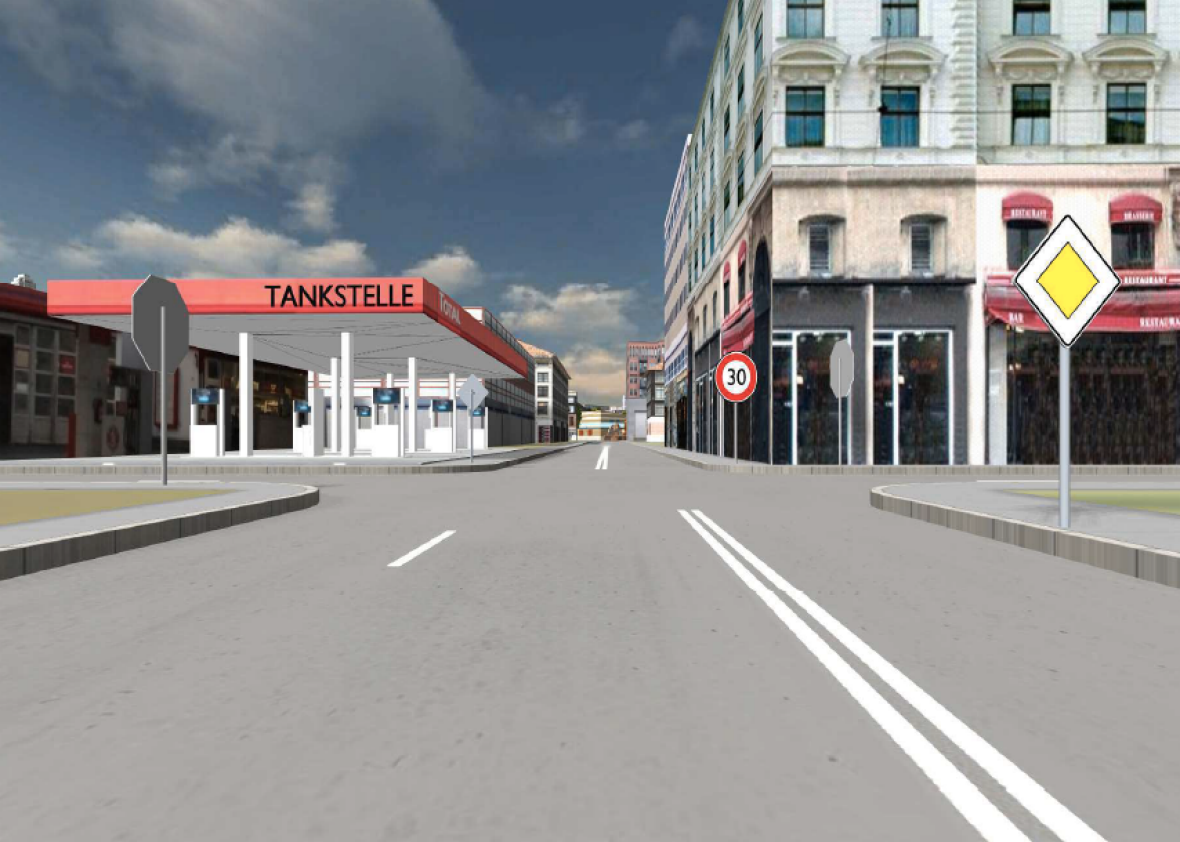Navigation technology is making you dumb—or at least a little less geographically knowledgable than you would be if you were using a traditional paper map.
This process, which experts call “spatial cognitive deskilling,” has been demonstrated over and over again: As we grow more and more dependent on sophisticated navigation services like Waze, our brains stop doing the heavy lifting necessary to create and maintain mental maps. We become what the Japanese call hōkō onchi, or “deaf to direction.”
Hippocampus be damned, none of us is going back to Rand McNally if we can help it. You can set up digital mapping software in a way that requires slightly more effort: Leaving the map static, with north facing up, for example—rather than have it rotate as your steering wheel turns. But what if there were a way to modify GPS turn-by-turn directions in a way that made navigation more enriching but not more onerous?
That’s what Klaus Gramann, a psychologist at the Berlin Institute of Technology, has been working on. His experiment, whose results were published this winter in Frontiers in Psychology, involved new ways of giving directions.
Participants sitting in a driving simulator navigated the same computer-generated urban landscape but were given three different types of directions. The first group received standard turn-by-turn directions, the kind Google Maps gives you. The second received directions based on landmarks—like a concert hall or a gas station—with additional information. The third received directions based on the same landmarks with personal information adapted for each individual “driver.”
The three styles might be summarized like this:
- “Turn right at the intersection.”
- “Turn right in front of the movie theater. Here you can see a movie.”
- “Turn right in front of the movie theater. There you can watch your favorite movie, Zoolander.”
The idea behind the second and third styles was to make a foreign city memorable, to try to transform the urban fabric into landmarks that would prove useful in navigating that same route without directions. Indeed, participants who received the more detailed directions made fewer errors when later navigating the route on their own.
It’s a funny reversal of the popular, ancient “memory palace” method, in which spatial thinking is used as tool to recall facts. Here, the distribution of information is used to bring geographic perception into sharper focus. Drivers being fed facts irrelevant to the task at hand seemed to move through the city with a broader, heightened sense of their surroundings.
Maps aren’t like recipes—an old-time instruction whose commitment to memory has been rendered obsolete by the internet. Spatial thinking is a fundamental skill. Its practice may help ward off dementia, some of whose earliest symptoms include disorientation. That creates a vicious cycle, Gramann said. “The moment you start feeling insecure about your spatial whereabouts, you fear getting lost, you don’t get out anymore. The less you get out, the less neural matter is built in your hippocampus.”
Since people are obsessed with enhancing their own cognitive abilities (and those of their children), Gramann thinks navigation companies should add “learning-oriented” functionality. Those directions might be weirder than the ones from Google Maps. But even if you never figure out another route on your own, they’d be doing you good.
You could always force yourself to get around with a paper map, of course, although that prospect makes the assumption that the external support system for paper navigation will be maintained. In 2010, Slate editor-in-chief Julia Turner raised this prospect in her series on signage. Colin Beatty, a satellite navigation consultant and former president of the United Kingdom’s Royal Institute of Navigation, told Turner that the progress of GPS navigation would eventually kill signage as we know it: “Once the map databases are good enough, he told me, we’ll come to trust our digital navigators as much as we now trust our own eyes.”
That was in 2010. By 2020, it’s projected that 70 percent of the global population will be using smartphones. If we’re going to see a smarter way to get around, it may have to come from inside them.
